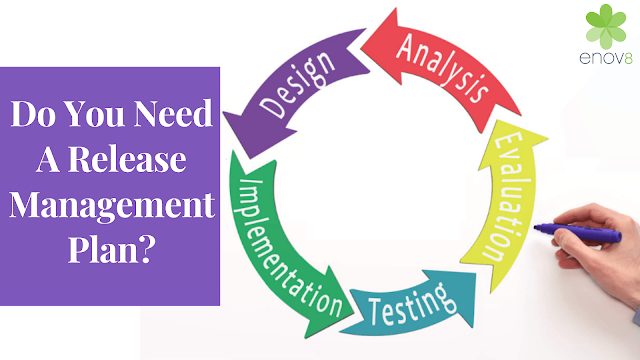Let's say that a team of developers is working on a new software product. After months of designing, coding, and testing, the product is ready for its first release. You know this software will be a hit in the market.
You've researched your competitors and target audience and prepared a marketing strategy. Now it's time to release this new software to the market.
But how? You can't just hit "Go" and hope everything works fine. There are numerous elements to consider prior to releasing a product. This is where a software release management plan comes into action.
What Is a Release Management Plan?
A release management plan is a crucial part of the software development process. A release plan consists of documented processes, people, tools, and workflows to guide the entire team in the various stages of application development, from design to re-design, testing, and deployment.
It also gives them an insight into what they can expect in the future and how they can use their skills to improve the product's quality.
The project success rate increases significantly when this is followed properly. This way, every team member knows what needs to be done at any point during the lifecycle of your project.
DevOps solutions in release management ensure that the operations and development collaborate and function together to move things faster down the deployment pipeline.
Why Do You Require A Release Management Plan?
As a project manager, you need to have an effective release management plan before starting with the actual project work.
- It will help you accelerate the entire workflow and inject efficiency by ensuring that everyone involved is on the same page regarding the tasks at hand.
- The plan also provides an overview of the project and its details, including the description of its goals, objectives, scope, risks, plan for acceleration or delay of releases, testing procedures, and much more. It is a reference for each member to refer to when necessary.
- The best part about having one is that it keeps track of all changes made during each stage. In case there are any issues arising, clear instructions are outlined on how those issues should be solved.
- The software release management plan outlines the steps required to successfully deploy a new or updated application. It is used as a guideline and consists of all the tasks and activities that need to be undertaken to ensure that the software can be deployed in production without any issues.
- It is also useful for managing expectations with customers or end-users about when new software or feature is released publicly
How to Build Your Release-Management Process?
Whether you're building a new digital product or updating an existing one, you need a release management plan. It defines the essential steps that need to be taken in each stage of the product development lifecycle, including planning, development, testing, and going live.
Appropriate release planning is the foundation.
During this step, you'll identify all the tasks involved in releasing the product, assign someone to manage each task, and set dates for when you hope to complete each task. You'll also decide which stakeholders will be involved with what tasks.
This is a vital step because it helps you ensure that everyone is on the same page and that everything is under control before you begin development. Implementing DevOps solutions can improve your release plan significantly.
Enthusiastic and active development
Once your planning is underway, it's time to begin development! This is when all the hard work happens—your team will use their programming knowledge and expertise to build out the product codebase on previous feedback, goals, and other requirements mentioned in the release management plan.
Customer testing is a must.
At this stage in the process, you can invite a certain percentage of users to test out the product before it's officially released, also known as Canary testing. During UAT, users will be able to interact with prototypes or low-fidelity/high-fidelity products.
Quality assurance
Before you deploy your product, you should conduct a final review of all components in the product. You should also test your application using load testing tools that simulate real user activity on the application.
This helps you identify any potential issues before they affect production users.
It's time for the launch.
After you have completed all the above-listed steps, you are now good to go with your product launch.
And, it becomes even better when you have
DevOps Solutions at your back! DevOps fosters a collaborative culture between developers and operation teams to ensure streamlined workflows and successful releases.
Conclusion
A release management plan is thus one of the most important elements of software release management. It's a document that helps you plan and organize a software release.
The software development life cycle is all about executing specific tasks in proper order. And, all thanks to well-devised software release management plans which help you manage things properly.




Comments
Post a Comment